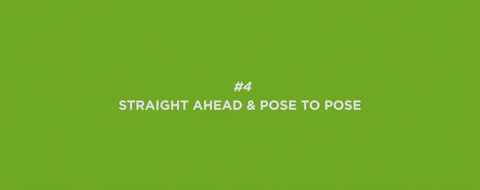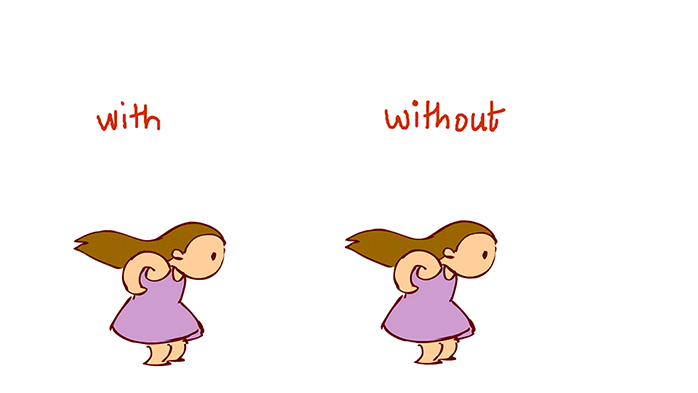Prince, S. (2010) 'Through the looking glass: Philosophical toys and digital visual effects', Berghahn Journals, Volume 4 Issue 2, pp. 19-40.
Visual effects combines art and science allowing filmmakers to create new, or replicate, environments and objects based on the laws of physics, properties light, fluid and particle dynamics. VFX is used to create both perceptual and indexical realism in cinema and the article examines this by questioning the orthodox assumptions of VFX in film, such as, the argument that VFX is a spectacle and spectacle creates anti-narrative. Prince uses films, such as Jurassic park, Zodiac and The Curious Case of Benjamin button, to explain these assumptions and their counterarguments. Philosophical toys is the history of cinema, it is both art and science and were used for both amusement and scientific investigation. This is said to be the origin of VFX. The article discusses this and what it shows us about VFX today.


image showing many philosophical toys

Manovich, L. (2001) 'Cinema, the Art of the Index', The Language of New Media. Massachusetts Institute of Technology, pp. 293-296
This article discusses cinema it history and what it has become today.
Lev Manovich describes Digital cinema as a particular animation which uses live-action footage as one of its many elements. He notes the majority of discussion around digital cinema has focussed on the possibilities of narrative interaction and argues against this. The article discusses how cinema is challenged as now it is possible to create and use digital images, without having filmed anything. Cinematic realism is no longer the dominant mode of moving image it is one of many options. He discusses the many differences between historical practical effects and modern digital effects, despite this he points out that many of these historical techniques are still used in the industry. The author discusses the digital cinema and its elastic reality in an example of the opening scene of Forest Gump where a feather floats around the scene although this being fake and near impossible it was made to make us feel as though it was real.


McClean, S.T. (2007) 'So here's the deal: A case study considering the influence of franchise filmmaking and its relationship to digital visual effects', Digital storytelling: the narrative power of visual effects in film. Cambridge, Massachusetts: The MIT Press, pp. 171-183
In chapter 8 of this book the author discusses franchise films, using the very successful Alien franchise as a case study. There are arguments that film franchises are made for a commercial benefit, to get more money out of a popular film etc. McClean (2007, p.171) states that she does not disagree with this but argues that alien is built on an original and resonant source product. This chapter discusses the narrative throughout the franchise and how it changes based on what was popular to watch at the time. It compares the different themes of the films and how it reflected the events of present society. Alien used both traditional and digital VFX throughout the series. McClean compares the first and last film and discusses how the different uses of VFX changed certain things throughout the series, e.g. the ship in the first film was very small where in the last it was spacious, because of the use of Digital VFX. The first film was released in 1979 and the last in 1997 so there is a big change in VFX seen. In the beginning there was more use of traditional VFX as digital was not as popular, the alien was a combination of puppets and actors in suits, whereas Resurrection was the first to be full scale DVFx and the only film in the series to have a fully CG creature (McClean 2007).


Screenshot taken from the resurrection film in 1997
Famous chest buster scene from the original film in 1979
'Shapes' (2011), The Code, episode 2, 3 August. BBC two. Available at: Box of Broadcasts (Accessed 8 Oct 2019).
This clip from the BBC Code discusses Fractals and how perfect shapes in nature do not exist. Marcus du Sautoy speaks with artist and physicist Richard Taylor about Jackson pollock. Pollocks paintings may look like a miss but they actually have a structure which no one else has been able to replicate by hand. Taylor created a machine to mimic pollocks painting technique. With the paintings, there is no way to tell whether you are looking at a close up or the original because the pattern can be seen consistently throughout it. This pattern can also be seen in the randomness of mountains, clouds, trees and more, this is known as fractals. He then visits Pixar and talks to Loren Carpenter about the use of fractals in animation, some of the very first realistic animations used fractal mathematics and Loren Carpenter was the one to create the software for computers to do this. We are shown one of the first animations to use fractals, a mountain range, made from triangles dividing and moving etc. Pixar animations to this day use fractal mathematics to create realistic landscapes.



Jackson Pollock and his paintings
the pollockiser (machine to mimic pollocks technique)
Mori M. (2012) 'The Uncanny Valley', IEEE Robotics & automation magazine, pp. 98-100.
This article, written in 1970 by Masahiro Mori (robotics professor) explains the uncanny valley, how people react to human-like robots and how these reactions change the more human it becomes. Mori created two graphs comparing affinity to human-likeness, using items like prosthetic hand, robotic toy and much more to explain his theory. One of the graphs shows the effect that movement of these items has on us and the uncanny valley. It seems that usually the more human-like something becomes (that isn't human) the more creepy/negative reaction is received, this could be because of the difficulty to create realistic movements (especially facial expressions). The author suggests that we shouldn't create realistic robots/prosthetics as they give a negative feeling to humans but instead create a more natural, stylish look, such as with wooden prosthetics.



For example, I recently watched the new gemini film which features a fully CG character of a younger Will Smith. This character at times looks very realistic, but when there are close ups to his face there is something very creepy and strange about him. This might be because when he speaks the movements of his face just don't look right, in a way they look to real.
Lay, S. (2015) 'Uncanny Valley: why we find human-like robots and dolls so creepy', The Guardian, 13th November. Available at: https://www.theguardian.com/commentisfree/2015/nov/13/robots-human-uncanny-valley (Accessed: 24 October 2019)
This article discusses the Uncanny Valley and the different views on it. There is a current debate on whether the uncanny valley is real or not and this article seems to support that it is real. Where the uncanny boundary lies is briefly discussed with reference to research into mannequin faces morphing to human as well as a study on if we believe these human-like robots/dolls can posses a mind. The creepiness behind facial expressions in robots seems to be the main point and the author discusses how a combination of different expressions affects us.
The uncanny valley could be applied to this film (Alita: battle angel). This film features a human like character surrounded by normal human characters. Many people thought she was very creepy as she looks like she should be a real human but something about her doesn't seem right. This is because she is completely CGI with certain features enhanced (such as her eyes) which gives her more of an anime sort of look, however maintaining a human appearance.


The above image shows the final look of the character from the film. Here you can see how enhanced her facial features are compared to a regular human.
The image to the left shows the behind the scenes of how they filmed the character, as you can see the actress is in a motion capture suit with referencing on her face as well as.
Week 1 - introduction
Visual effects has many definitions: is a trick to the eye in cinema, it is creating something that isn't possible/real, it is bringing imagination to reality and it is a combination of things that have been filmed and computer generated content.
In this first lesson of Principles of VFX we started off by watching the first 25 mins of the film 2001 - A space Odyssey directed by Stanley Kubrick.
The theme of this was one of development/evolution, there was a dramatic contrast between pre-history and the futuristic space world. It started off with life on the planet, showing apes not very smart until this futuristic black shape (the monolith) appeared and the apes that were around it developed the use of tools and defeated the other apes. This monolith is very unfamiliar, alien, strange, science fiction etc. and is a trigger for the apes to become smarter. There is also a shot where we see it pointing to the moon which signifies where this film will take us next...into space.
There is a very interesting shot where the ape throws a bone into the air and it turns into a spaceship, once again linking how the apes evolved into this futuristic world.
I watched the rest of this film when I got home and I found it very interesting. It could be one of the landmarks/starting points form which VFX took off. The film was released in 1968 and I find it interesting to compare this to how VFX are made today. The visual effects in the passed are very much connected with special effects and majority of it consists of special techniques of filming. For example the spaceships we see in this film are actually small models filmed at a certain angle to make it look bigger, and the apes in the beginning are just actors in suits. Where as if this film were made today we might have more technology used, such as the guys being in motion capture suits then edited to look like apes (as seen in the new planet of the apes) and the spaceships might be models as well as CGI.


Week 2 - notes
In this class we watched short clips from 3 different films: Zabriskie Point, directed by Michelangelo Antonioni (1970) ; Gravity, directed by Alfonso Cuarón (2013) ; Sherlock Holmes: A game of shadows, directed by Guy Ritchie (2011). These films had two main things in common: explosions and slow motion, however they were each used to show different emotions / make the audience feel a certain way.
1st clip (Zabriskie point) - showed revenge, the actress is happy to see everything be destroyed, she is letting go, the idea of destroying things in everyday life, which was shown in slow motion, creates a visual spectacle which is different/nice to look at.
2nd clip (Gravity) - this clip gave the sense of despair/anxiety, there was the feeling that the actress does not want to be there (especially since she repeatedly says she hates space), the quick colliding of debris with the spaceship compared to the slow movements of the actress through space was an interesting comparison and gave the feeling that she must survive.
3rd clip (sherlock holmes) - this clip is very technical, it is a get away scene so there is a lot of tense throughout the scene and the use of slow motion was to show every little detail, for example they showed the inside of a grenade launcher as it was being loaded/shot.
Explosions and slow motion seem to be quite common in VFX films.



Week 3 - notes
In this lesson we watched an interesting Ted talk form Rob legato, the art of creating awe. He talks about his experience on working in films like Apollo 13, Titanic and Hugo, and how often the effects he made were, in a sense, better than the original thing, and how our brains work to alter our perception, based on what emotions we feel.
We also learnt about the history of VFX and some important people who had an impact on the industry.
The Lumiere brothers filmed one of the first moving images of "the arrival of a train at la Ciotat station - 1895". It is said that when the audience was shown this film they screamed and ran away as they thought the train was actually coming towards them.


Eadweard Muybridge studied how humans and animals moved and released a book of images called The Human and animal Locomotion Photographs.
George Melies is known as the father of special effects. He was a magician before a filmmaker and used his filmmaking skills to produce many tricks, making objects disappear or turn into other objects. Melies created multiple exposure, time-lapse photography, colour painting negatives and stop trick photography.

Week 4 - notes
In this lesson we looked at CGI and how it has changed throughout the years.
We looked at a scene from the film Jason & the argonauts, 1963, and a scene from Pirates of the Caribbean - the curse of the black pearl, 2003. This showed a comparison of skeleton CGI in 1963 v.s. 2003. In Jason & the argonauts stop motion animation was used, not very believable if watched now but back then was, the skeletons were shot frame by frame v.s. how now (such as in P.O.T.C.) we can create 100% digital skeleton characters. Another example of this can be seen inn planet of the apes 1968 v.s. 2011. The first one has actors dressed in ape costumes where the second one is 100% CG characters (actors inn mobcap suits).
Why use Computer Generated Imagery in VFX? - CGI has a power as a tool to create more photorealistic imagery which surpasses traditional VFX
What was the 1st CGI sequence ever produced? - Kitty 1968 - the film industry caught on very quickly to CGI so it developed rapidly.
Westworld 1973 - 1st use of 2D computer animation in a significant feature film.
Star Wars 1977 - 1st use of a animated 3D wire-frame graphic.
The young Sherlock Holmes 1985 - another example of early CG - stained glass knight scene
Alien 1979 - used raster wire-frame model rendering for navigation in the landing sequence.
Star tek 2: the wrath of Khan 1982 - landmark for VFX - 1st use of a fractal generated landscape in a film.
Week 8 - notes
In this lesson we looked at VFX and the film industry.
Started by watching a documentary on the BTS of life of Pi + Documentary - 'Life after Pi' (2014). This shows the struggle of VFX in the film industry, the reality of it, discusses financial struggles and respect in the industry.
Talked about the Green screen logo protest - scenes without VFX would be just green screens. SOLUTION: changing the way the industry feels about fixed bid, not using fixed bid in VFX.
'Its just pressing a button' - combo thought, people don't realise/appreciate the work or importance of VFX artists.
The amount of VFX in films has grown a lot of the years.
More and more films are being nominated for VFX awards.
This documentary we watched showed that despite the fact that the company produced amazing CGI pictures for the film, winning an Oscar and getting lots of recognition, they still went bankrupt, showing that something in the industry isn't right.



Week 9 - notes
Watched: the making of Toy story 1995
Snow White 1937 -> 2D animation -> looks flat
Multi plane camera, designed to make cartoons more enjoyable 1957, helped 2D look less flat, gave a sense of depth - watched a video explaining this.
Perspective is very important in animation. We can also see perspective in old paintings etc, this gives it a sense of depth and reality.
3D software space is described by Anne Frieldberg as a digital simulacra of a space.
The illusion of life: Disney animation, Thomas, Frank; Johnston, Ollie
This book gives a history of Disney animation and explains the philosophy of the animators in the "12 basic principles of animation" which are:
1. Squash and stretch - gives a sense of weight and flexibility to drawn objects as they move. This is done by "squashing" and "stretching" the character body or object, this gives a sense of movement as we see gravity working in these animations.


2. Anticipation - used to prepare audience for an action. To do this the animators will put a smaller action before the main one to signal that something is coming. In the image we can see the character lean back, preparing to throw the ball, telling us that there is an action coming, and in the gif the block wobbles back and forth before turning over.


3. Staging - to direct audiences attention and make clear what is important in the scene, whether it is an action, expression, mood etc. This can be shown by the characters placement in the frame, the use of light/shadows, the angle of the camera, it is important to just keep focus on what is relevant and avoid unnecessary detail. /the image on the right shows an example of good and bad staging, the good staging is when we can clearly see what is happening, even if the character was a silhouette.


4. Straight ahead and Pose to Pose - these refer to the technique of crafting animation. Straight ahead is animated frame by frame, allows for more fluid movement, more realistic sequences. Pose to Pose starts with drawing key frames and then filling in later, works better for emotional scenes, where its more about creating an idea than a sense of realness.


5. Follow through and overlapping action - when a character stops, nothing stops all at once. For example, when a character is running and then suddenly stops, there main body will stop but other parts will continue, such s their hair.


6. Slow in and Slow out - real objects need time to speed up and slow down and therefore more images are drawn at the beginning and end of the animation, where less are drawn in the middle, in order to give a sense of realism.


7. Arc - most action follows a trajectory, this principle suggests that almost every motion has a slightly circular motion. For example when a head moves or an arm is extended, it won't just go straight in and out, it will have a little curve to it.


8. Secondary action - this is an additional action that adds more life to the main action. These emphasise the main action instead of take away from it. For example a person walking can swing there hands by there side, whistle etc.


9. Timing - this helps create the illusion that an animation is following the laws of physics. It is critical for establishing mood, emotion and reaction. By adjusting timing animators can make a scene look slower and smoother or fast and crisp


10. Exaggeration - this is useful in animation as animation emotions that imitate reality perfectly can come across as dull. This principle is about overstating certain movements in a way that help evoke the point but not ruin the believability of the scene.


11. Solid drawing - this means taking into account 3D space, giving characters volume/weight, despite being drawn in a 2D environment.

12. Appeal - this is what charisma would be in an actor. A character does not necessarily have to be sympathetic to be appealing, villains can also be appealing characters. The important thing is that the viewer feels the character is interesting and real.

Wk 10 - notes
-
In this lesson we watched a VFX breakdown of 'Boardwalk' (season 2) and ' Black Sails' (season 4).
-
Looked at the Cottingley Fairies series of 1917 - photographs of fairies that fooled many people - they believed that these photos showed proof of the supernatural.
-
We can say that these photos set the scene for the fitter of cinema and compositing etc. - being able to create an image/visual fake and make it believable.
-
Watched: Hollywoods history of faking it/evolution of green screen compositing
-
compositing is made up of different layers - think of it like a sandwich, you need the ingredients (bread, cheese etc) but you also need the tools (knife, plate etc.)
-
it is important to understand this because in order to work in the industry you must know how everything fits together.
Take a look at M is for Matte painting - blog



Wk 11 - notes
-
James Bond is the most popular film series - watched the intros of many - shows how they have developed over time - the journey from special effects to visual effects.
-
Discussed essay planning : 1. understand the task, 2. Background reading, 3. plan, 4. write
the link above is to a page which shows all the James bond title sequences
Essay research
I decided to do the question "compare an original film with a remake - citing examples of how the use of digital visual effects has influenced the production and associated cinematic theory"
I decided to compare the original It 2 part miniseries (1990) and the remake It chapter 1 (2017), It chapter 2 (2019). I started out by looking at the physical differences first. Seen in the image below.


